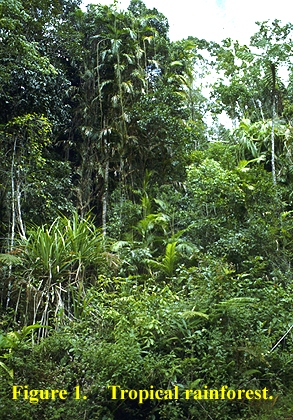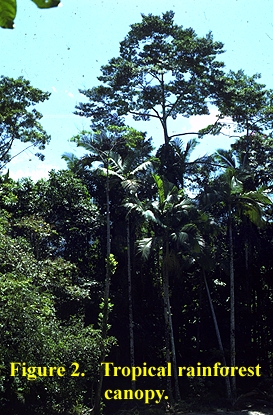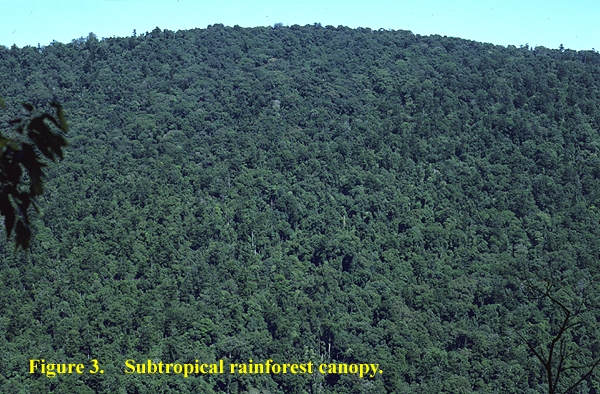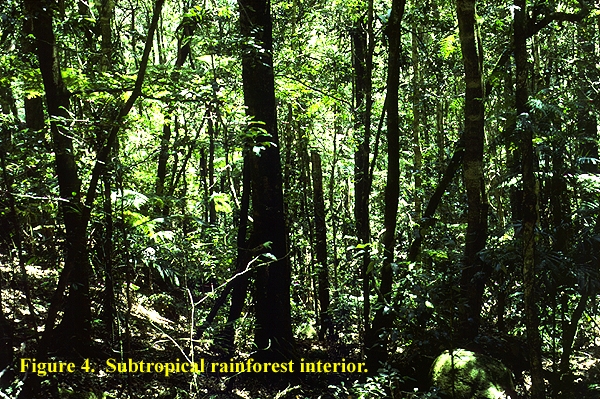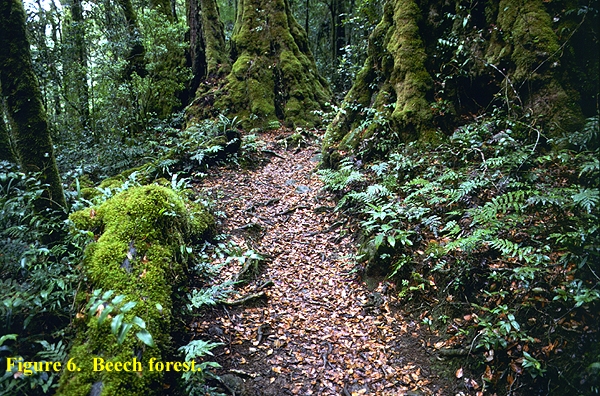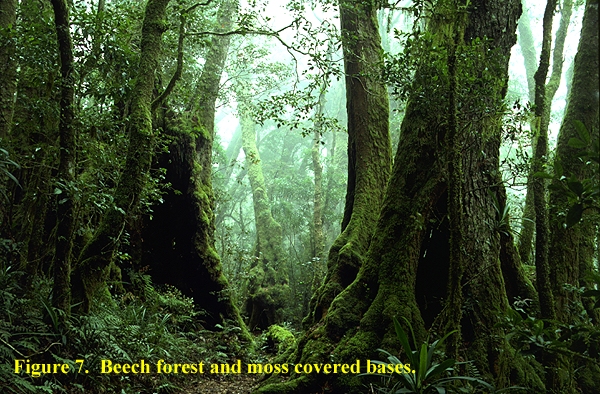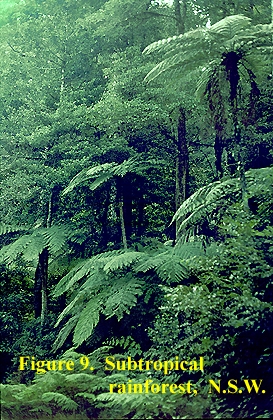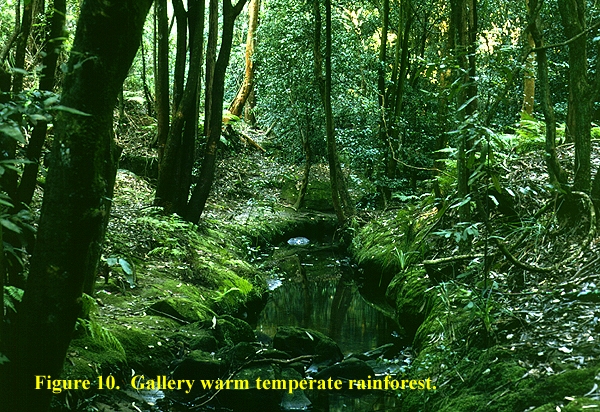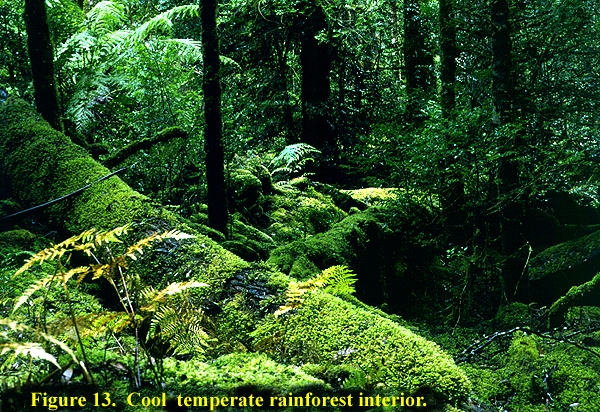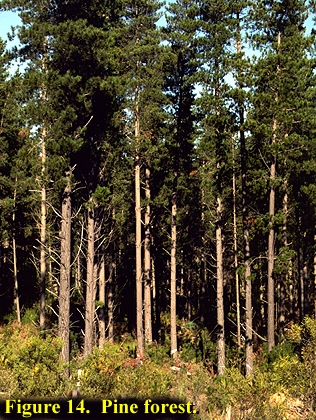
Introduction
There are believed to be more than 20,000 species of Australian higher fungi (mushrooms, toadstools, etc.) but only about 5,000 species have been scientifically described. To understand how many new Australian fungal species remain to be described, think of a mycologist who collects fifty different species on a particular day in any Australian forest: on average about 1020 of those species will not have been described. Therefore, an immense amount of work remains to be done on the Australian species.
Most people are surprised to learn that without the various fungi of the forests, the forests as we know them would not exist. The fungi (and particularly the higher fungi) are the main recyclers of plant material; bacteria and invertebrate organisms (including insects) are unable to deal with the immense amounts of accumulating dead plant material produced in a forest. Without the activity of the fungi, tree trunks, leaves, twigs and other plant debris would either rot extremely slowly or not at all and would therefore remain on the forest floor for extended periods of time. In rainforests for example, it is certain that over a period of time, perhaps 5080 years, the plant material would simply pile up and choke the forest to death. One estimate suggested the depth of litter and logs would reach about 20 metres after approximately 100 years. Nutrients would be locked up almost completely and newly emerging plants, if they could find a way through the ever increasing mass of non-rotting tree trunks, would be starved of essential minerals. The role of the fungi in recycling plant material cannot be underestimated.
As the destruction of our forests continues, so too does the destruction of the unique and beautiful fungi that are so essential for the normal health of the forests. Many of these fungal species cannot survive without the special environmental conditions produced by intact forests, and as soon as major human interference occurs, the fungi disappear. Our forest fungi are also primary food sources for the mammal and reptile inhabitants and very complex relationships are known to exist between some fungi, animals and forest trees. A good example is the link that has been established between bettongs, eucalypts and a puff ball species. The fungus forms a partnership with the trees but provides food for the bettongs which receive shelter from the trees. The fungus spores are scattered in bettong dung, and so a circle of dependency is established where each partner benefits from the other two.
No-one knows how many Australian higher fungi have already become extinct or even if any have suffered that fate, but the loss of any species is a biological disaster since each represents a large biological investment in the future for a healthy earth. So often fungi have been the 'forgotten kingdom' and in Australia they are in urgent need of study so that the best methods of conservation can be put in place. For the moment, preservation of their habitats in perfect condition seems to be the best way of maintaining the presence of the various fungal species.
Types of Forest and their Fungi
Forests occur in a variety of locations in eastern Australia from the Cape York Peninsula of north Queensland, down the eastern coast and coastal ranges of the mainland and finally on the western coasts of Tasmania. Over that distance, the structure and type of forest differs widely. For this key, the definition of forest is simply that the trees grow in a 'forest form', i.e. a very long trunk with a relatively small crown. Even this definition is somewhat pliable and some areas are covered with vegetation that is acknowledged to be a type of forest but is not of forest form. For example, the Nothofagus (beech/myrtle) forests of eastern Australia are most definitely forests (and are sometimes called cool temperate rainforests, occurring as they do in areas that receive well over 1000 mm of rain annually), yet in some places these beech forest canopies are not very high and they are relatively open compared with the canopies usually found in subtropical or tropical rainforest.
Tropical rainforests are closed canopy forests with abundant vines or lianas, quantities of epiphytes (mosses, lichens, ferns, orchids, etc.) and a generally shaded forest floor with reduced vegetation except in clearings caused by tree falls, etc. The number of tree species present is immense and the higher fungi associated with these forests are principally those concerned with parasitism of the living trees, wood decay and litter decomposition. These northern and coastal Queensland rainforests are largely unexplored for higher fungi. Not only are huge numbers of unknown species expected to be found, the forests are also expected to contain fungal species that are either the same as or are related to those found in Indonesia, Malaysia and south-east Asia. This prediction can be made with confidence because every year the monsoon rains roll in from the lands and sea of south-east Asia and bring with them humid air in which light fungal spores must be present. In this way, fungal immigrants have been reaching Australia for thousands or perhaps millions of years. It still remains to be seen how many Asian-related species are here and how far down the eastern coastline of Australia they have penetrated.
South of about Rockhampton, subtropical rainforest begins to appear. To most people except botanists, these subtropical rainforests show little difference from the rainforests of the tropical north. However, their trees and other plant species are often very different and they are adapted to the cooler climates found further south. The canopies are still closed and the lianas, ferns, epiphytes and numerous plant species are all still present. Subtropical rainforests are found from southern Queensland to central New South Wales, mostly as rather small remnants of the original forests. One curious variation on the subtropical rainforest is found in the Bunya Mountains of southern Queensland where the Bunya pine (Araucaria bidwillii) forms the dominant species in the canopy. Subtropical rainforests occur in suitable locations on the coast and in the coastal ranges with the furthest pockets found around Wollongong, south of Sydney. These rainforest patches contain fewer species of plant than the tropical rainforests further north and they survive only because of unusual local climatic or geographical conditions. Nevertheless, rainforest fungi inhabit these reduced forests and, in good seasons, can be just as spectacular as the northern rainforest fungi. Australian subtropical rainforests contain trees which do not usually have mycorrhizal partners in the species of the higher fungi although they do form mycorrhizae with many microfungi.
Antarctic beech (Nothofagus moorei) forests first appear on the Queensland-New South Wales border on the higher tops of the MacPherson Ranges. These forests usually occur as islands within the subtropical rainforest and contain few tree species other than the beech. Temperatures in the beech forests tend to be lower than the surroundings because the forests are restricted to the summits and higher slopes of the mountains where they form a cool, wet rainforest. Antarctic beech occurs in isolated patches as far south as the Barrington Tops in central New South Wales. In Victoria and Tasmania, the Southern beech (Nothofagus cunninghamii), replaces the northern species and is often referred to as 'myrtle'. The Tasmanian beech forests are extremely beautiful as they produce immense moss carpets on their floors.
Many wood-decaying fungi occur in beech forests. In addition, and unlike the subtropical rainforest, there are large numbers of higher fungi with mycorrhizal relationships. Antarctic beech forests usually have a much more open canopy so that more light penetrates; nevertheless, few plants appear to grow on the forest floor. Further south, and particularly in Tasmania, the beech forests often have very closed canopies. Genera and species of higher fungi that are normally seen only in eucalypt forests appear in the beech forests and are exciting to find as they show a relationship that was first built during the presence of the long vanished supercontinent of Gondwana. The fungi of the Australian beech forests are closely related to those of similar forests in New Zealand and South America.
In many places, an interesting 'hybrid' rainforest exists in which various specialised species of gum-tree (Eucalyptus spp.) or 'scrub box' (Lophostemon confertus = Tristania conferta) invade the edges of the tropical or subtropical rainforest, and the higher fungi of the rainforest can also include specialised species that go into partnership with the tree roots (mycorrhizal relationships) of these invading trees. These mycorrhizal species are always interesting to find because the Australian tropical and subtropical rainforest trees generally do not form this particular type of higher fungal root partnership.
Further south, tropical and subtropical rainforests disappear and in the high rainfall areas a gum-tree (Eucalyptus spp.) equivalent is found. This forest type based on eucalypts such as E. regnans (the Mountain ash of Victoria) has enormously tall trunks, a relatively open canopy compared to that found in the tropical rainforest and it lacks lianas and abundant epiphytes. The passage of extra light through the open canopy allows considerable diversity on the forest floor which is rich in shrubs and tree ferns. As a result, a second lower canopy can appear. The fungi here are involved both in plant material recycling and parasitism but also, like the beech forest, many species have formed relationships with the roots of the gum-trees. In addition, the underground species of higher fungi are often intricately involved in the food chains of many native marsupials.
In Western Australia, huge forests of Karri (Eucalyptus diversicolor) and Jarrah (Eucalyptus marginata) produce conditions that are very similar to the eucalypt based forests of the eastern States. These forests also have considerable numbers of fungi, some of which are the same species as found in eastern Australia, but equally, many species are unique to Western Australia.
Figures
1. Tropical rainforest in the Atherton Tablelands region of north Queensland. Dense clusters of lianes consisting of a climbing palm (probably Calamus motii) can be seen rising into the foliage of the canopy.
2. Tropical rainforest in the Atherton Tablelands region of north Queensland. The canopy structure of the rainforest is shown with an large emergent tree dominating the local area.
3. Subtropical rainforest in the MacPherson Ranges of south-eastern Queensland exhibiting a closed canopy.
4. Subtropical rainforest interior in the MacPherson Ranges of south-eastern Queensland. The image shows the reduced light available at the forest floor due to the closed canopy.
5. Mt Hobwee, Lamington National Park, south-eastern Queensland. This peak lies on the rim of the Mt Warning crater and forms part of the boundary between Queensland and New South Wales. With a height of 1140 metres, Mt Hobwee has cooler temperatures than the remainder of the subtropical rainforest and, as a result, is an ideal location for forests of Antarctic beech, Nothofagus moorei.
6. The Antarctic beech forest floor is usually moss- and fern-covered but also has large amounts of the bright yellow to yellow-orange leaf litter produced by the beeches. This type of rainforest has numerous fern and orchid epiphytes but has few lianes.
7. The massive trunks of the Antarctic beech provide ideal habitats for masses of moss. Often the bases form immense tangles of roots and soil above the general level of the surroundings.
8. The Bunya pine subtropical rainforest is a peculiar variation found on the Bunya Mountains of south-eastern Queensland. All of the usual lianes and epiphytes are present, but the dominant tree is the Bunya pine, Araucaria bidwillii.
9. Subtropical rainforest found near Gloucester, central-eastern New South Wales. A dense, closed canopy is produced with an understory of tree ferns, principally Cyathea spp.
10. Gallery warm temperate rainforest, Lane Cove, New South Wales. These very specialised rainforests are found beside the banks of small streams where they form a tunnel with the stream at the core. The surrounding land is impoverished and these rainforests exist only because the core stream supplies water and additional nutrients. Gallery rainforests have a closed canopy, but per unit of area, they have far fewer tree species compared with subtropical rainforests; there are no lianes and few epiphytes.
11. Wet eucalypt forest in the Mt Donna Buang region of southern Victoria. These forests have a very open canopy and, as a result, a large amount of light reaches the forest floor. This means that a second canopy of shrubs and tree ferns can form as shown here.
12. Cool temperate rainforest in the Franklin River valley of Tasmania. The closed canopy is very evident.
13. Cool temperate rainforest interior, Mt Field region of Tasmania. The closed canopy is present and the high rainfall leads to an abundant moss and fern flora on the forest floor.
14. A plantation of pines forming a forest in New South Wales. These exotic pines are principally species of genus Pinus and all are native to the Northern Hemisphere. Forests of this type carry a fungus flora that is based on the mycorrhizal partners of the pines, but many native Australian wood- or litter- rotting fungi can be found within these plantations.

